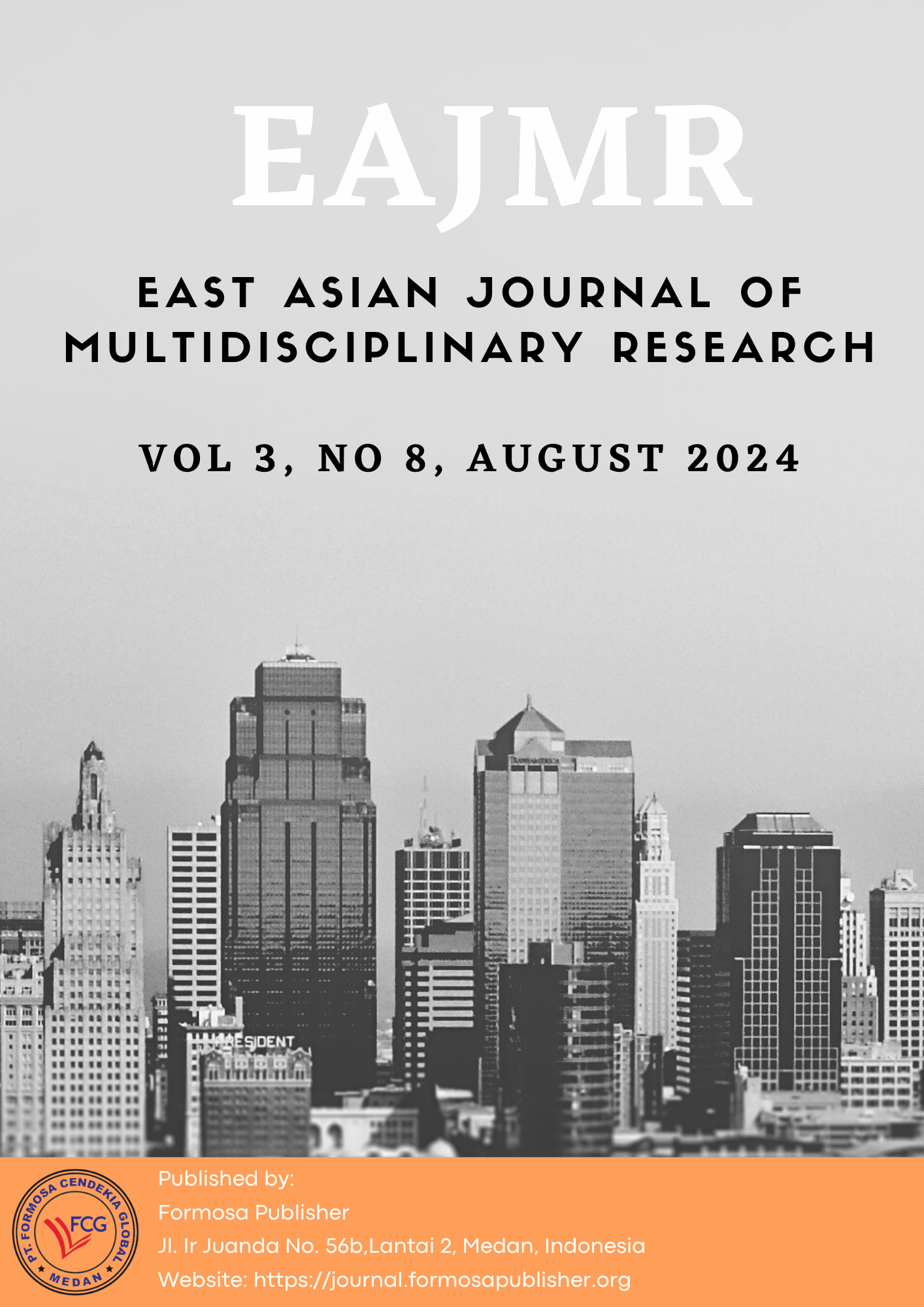Communication Ethics Facing the Ambivalence of Digital Technology
DOI:
https://doi.org/10.55927/eajmr.v3i8.10511Keywords:
Communication ethics, ambivalence, , digital technologyAbstract
This article aims to review the concept of action and answer how communication ethics faces the ambivalence of digital technology. Using a critical-normative research method on the works of Aristotle and Hannah Arendt, this study finds that in the face of the ambivalence of digital technology, communication ethics needs to put digital actions back on the consciousness of the perpetrator. In addition, communication ethics must overcome banal clicks and deal with the robotic manipulators of digital systems. There are two ways to use it: first, a complicated way in the form of resistance to digital manipulators, and the second is a soft way, which is to reposition the three virtues, namely courage, honesty, and elegance, to build digital altruism in digital communication ethics.
References
Alfes, K., Antunes, B., & Shantz, A. D. (2017). The management of volunteers–what can human resources do? A review and research agenda. … International Journal of Human …. https://doi.org/10.1080/09585192.2016.1242508
Altheeb, S. A. (2020). Leadership Style and Employee Motivation: A Study of Saudi Arabian Work Environment. Journal of Educational Psychology-Propositos y https://eric.ed.gov/?id=EJ1271842
Badaracco Jr, J. L. (1992). Business ethics: Four spheres of executive responsibility. California Management Review, 34(3), 64–79.
Badaracco Jr, J. L., & Webb, A. P. (1995). Business ethics: A view from the trenches. California Management Review, 37(2), 8–28.
Baedowi, A. (2011). Etika Bisnis Perspektif Islam. Jurnal Hukum Islam IAIN Pekalongan, 9(2).
Connole, H. (1993). The research enterprise. Issues and Methods in Research: Study Guide, Distance Education Centre. University of South Australia.
Connole, H., Smith, B., & Wiseman, R. (1993). Issues and methods in research. Distance Education Centre, University of South Australia, Adelaide.
Cummings, G. G., Tate, K., Lee, S., Wong, C. A., & ... (2018). A systematic review of leadership styles and outcome patterns for the nursing workforce and work environment. International Journal of …. https://www.sciencedirect.com/science/article/pii/S0020748918301019
Flynn, B. B., Schroeder, R. G., & Flynn, E. J. (1999). World-class manufacturing: an investigation of Hayes and Wheelwright's foundation. Journal of Operations Management, 17(3), 249–269. https://doi.org/10.1016/S0272-6963(98)00050-3
Gray, C. H. (2019). The threat of surveillance capitalism. Teknokultura: Revista de Cultura Digital y Movimientos Sociales, 16(2), 265–276.
Gunkel, D. (2016). Paradigm Shift: Media Ethics in the Age of Intelligent Machines. Controversies in Digital Ethics. New York: BLOOMSBURY, pp. 233–248.
Hakkak, M., Azadi, M. H., & Eftekhari, M. (2021). Prioritize The Components Of Sustainable Human Resource Management With A Fuzzy Approach. Sid. Ir. https://www.sid.ir/en/Journal/ViewPaper.aspx?ID=910554
Hardiman, F. B. (2021). Aku klik maka aku ada: Manusia dalam revolusi digital. PT Kanisius.
Henri, L., & Donald, N.-S. (1991). The production of space. Massachusetts: Blackwell.
Hoon Hum, S. (2000). A Hayes‐Wheelwright framework approach for strategic management of third party logistics services. Integrated Manufacturing Systems, 11(2), 132–137. https://doi.org/10.1108/09576060010314125
Irawan, D., Marisya, F., Hatidah, H., & Purwanto, M. (2024). Changing Principal Leadership in the Age of Digitalization. INTERACTION: Jurnal Pendidikan Bahasa, 11(1 SE-Articles). https://doi.org/10.36232/jurnalpendidikanbahasa.v11i1.6033
Jain, B., Adil, G. K., & Ananthakumar, U. (2013). An instrument to measure factors of strategic manufacturing effectiveness based on Hayes and Wheelwright’s model. Journal of Manufacturing Technology Management, 24(6), 812–829. https://doi.org/10.1108/JMTM-11-2011-0102
Lozowick, Y. (2005). Hitler’s bureaucrats: The Nazi security police and the banality of evil. A&C Black.
Miner, J. B. (2002). Organizational behavior: Foundations, theories, and analyses. Oxford University Press, USA.
Motion, J., Heath, R. L., & Leitch, S. (2015). Social media and public relations: Fake friends and influential publics. Routledge.
Nahavandi, A. (2009). The art and science of leadership. Pearson Prentice Hall Upper Saddle River, NJ.
Novia, F., Desti Nurdianti, & M Bambang Purwanto. (2024). English Learning and Innovation Skills in 21st: Implementation of Critical Thinking, Creativity, Communication, and Collaboration. Asian Journal of Applied Education (AJAE), 3(2 SE-Articles), 113–124. https://doi.org/10.55927/ajae.v3i2.8318
Pakaluk, M. (2005). Aristotle’s Nicomachean ethics: An introduction. Cambridge University Press.
Pintelon, L., Pinjala, S. K., & Vereecke, A. (2006). Evaluating the effectiveness of maintenance strategies. Journal of Quality in Maintenance Engineering, 12(1), 7–20. https://doi.org/10.1108/13552510610654501
Purwanto, M. B. (2022). The Effect of Learning Motivation on English Learning Outcomes at the State of High School 2 Sungai Lilin. FLIP: Foreign Language Instruction Probe, 1(2), 132–139. https://doi.org/10.54213/flip.v1i2.167
Sloan, L., & Quan-Haase, A. (2022). The SAGE handbook of social media research methods.
Swingle, M. (2016). i-Minds: How cell phones, computers, gaming, and social media are changing our brains, our behavior, and the evolution of our species. New Society Publishers.
Tillack, P. (2017). Introduction: Engaging Banality. In Engaging Banality (pp. 1–31). Brill.
Vahtikari, T. (2016). I value world heritage cities. Routledge.
Yu, H., Sedlezky, S., Wong, K., & ... (2018). Human resources management. In Pop-up Retail …. pressbooks.library.ryerson.ca. https://pressbooks.library.ryerson.ca/popup/chapter/chapter-14-human-resources-management/
Yukl, G. (2012). Effective leadership behavior: What we know and what questions need more attention. Academy of Management Perspectives, 26(4), 66–85. https://doi.org/10.5465/amp.2012.008
Downloads
Published
How to Cite
Issue
Section
License
Copyright (c) 2024 Irsasri Irsasri, Rema Marina, Tri Nugroho. E.W

This work is licensed under a Creative Commons Attribution 4.0 International License.







.png)





















